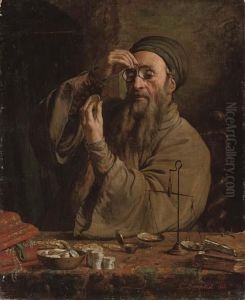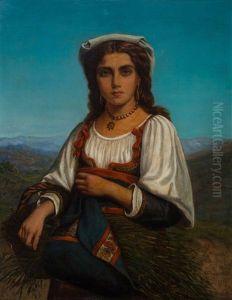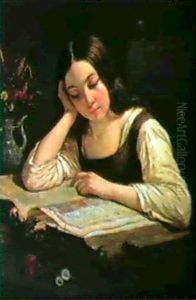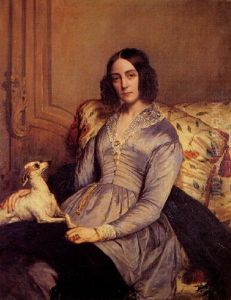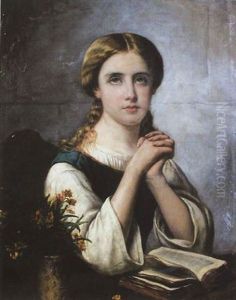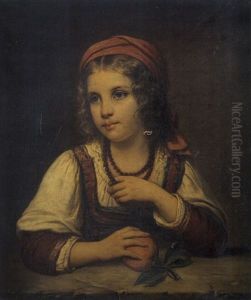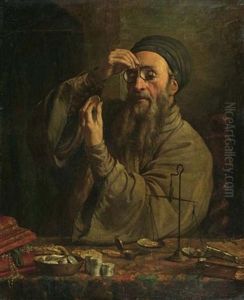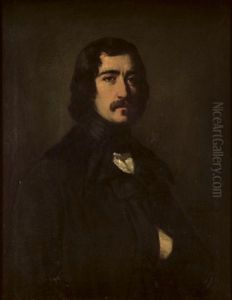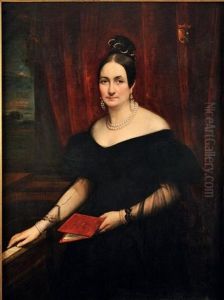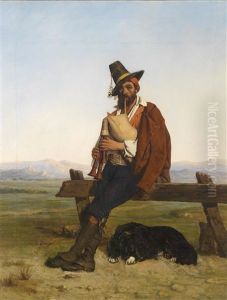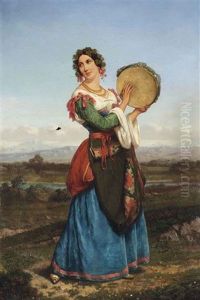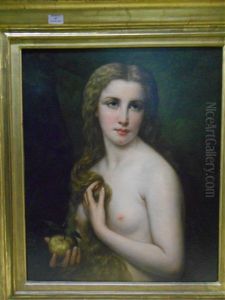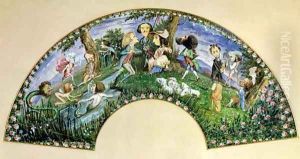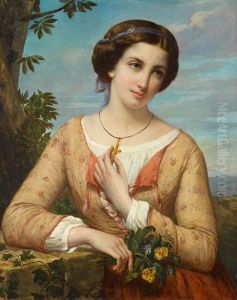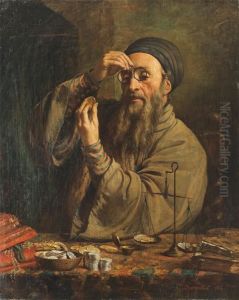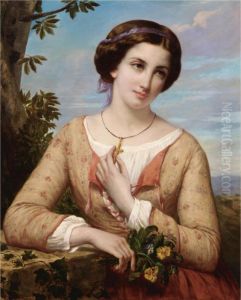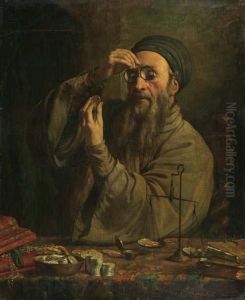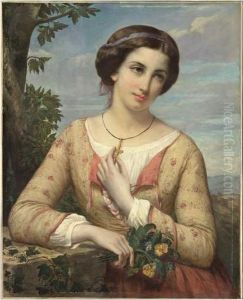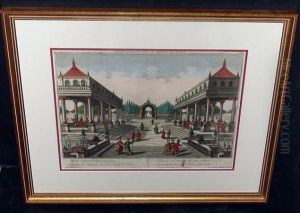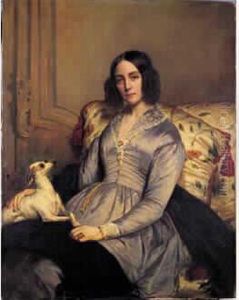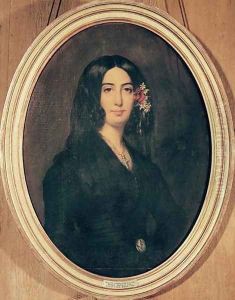Auguste Charpentier Paintings
Auguste Charpentier was a French painter born on May 12, 1813, in Saint-Mandé, which is now a suburb of Paris. He is known for his portraits and genre scenes that capture the spirit of the French middle class during the 19th century. Charpentier studied under influential French artists such as Paul Delaroche and Antoine-Jean Gros, who were both prominent painters of their time. These studies helped him develop a style that combined elements of Romanticism and realism, which was popular during the mid-19th century.
Charpentier's work gained recognition during his lifetime, and he exhibited at the Paris Salon, the official art exhibition of the Académie des Beaux-Arts in Paris. His works were well received, and he won several medals for his paintings at the Salon. In addition to his genre scenes, Charpentier also received commissions for portraits from the French bourgeoisie, who appreciated his ability to depict their likeness with a sense of dignity and elegance.
One of Charpentier's most notable works is the 'Portrait of Alphonse de Lamartine,' painted in 1839, which depicts the famous French writer and politician. This portrait is an example of Charpentier's skill in capturing the character and stature of his subjects.
Auguste Charpentier was also involved in the artistic life of his time and was acquainted with several literary figures. He was a part of the intellectual circles that included writers and artists who were shaping French culture during the 19th century.
Despite his success, Charpentier's work is not as widely known today as some of his contemporaries. However, his paintings remain important for understanding the social fabric and cultural life of France during his era. Charpentier continued to paint until his later years and passed away on February 2, 1880, in Paris. His legacy lives on through his contributions to 19th-century French art, particularly in the genre of portraiture.
